Pilea involucrata is a unique tropical plant – known for its deeply textured leaves and contrasting colors.
I’m talking rich bronze hues and flashes of shimmering silver.
But, despite its expensive looks, it isn’t a demanding plant when you know how to look after it, which is exactly what you’ll learn in this article.
In fact, Pilea involucrata earned the nickname “The Friendship Plant” because of how easy it is to grow and propagate and give to friends to grow their own Pilea.
So without further ado, let’s go for the gold!

Pilea involucrata vs Pilea mollis (Do You Have the Right Plant?)
There’s no genus as susceptible to being misidentified as Pilea, and this plant takes the crown.
So, before we jump into the care specifics, it’s prudent to clarify what plant we’re talking about here…
If you google ‘Pilea involucrata‘ (and I’m guessing that’s how you’ve arrived here), you’ll be confusingly greeted by two very different plants.
- One has round plump leaves, fabulous linear ridges, and chic burgundy/steel shades. This is the iconic Pilea involucrata, people!
- One is bright Shrek-green, with some bronze at the center of each leaf, and is heavily quilted. This is the equally iconic Pilea Mollis, also known as the Moon Valley Pilea.
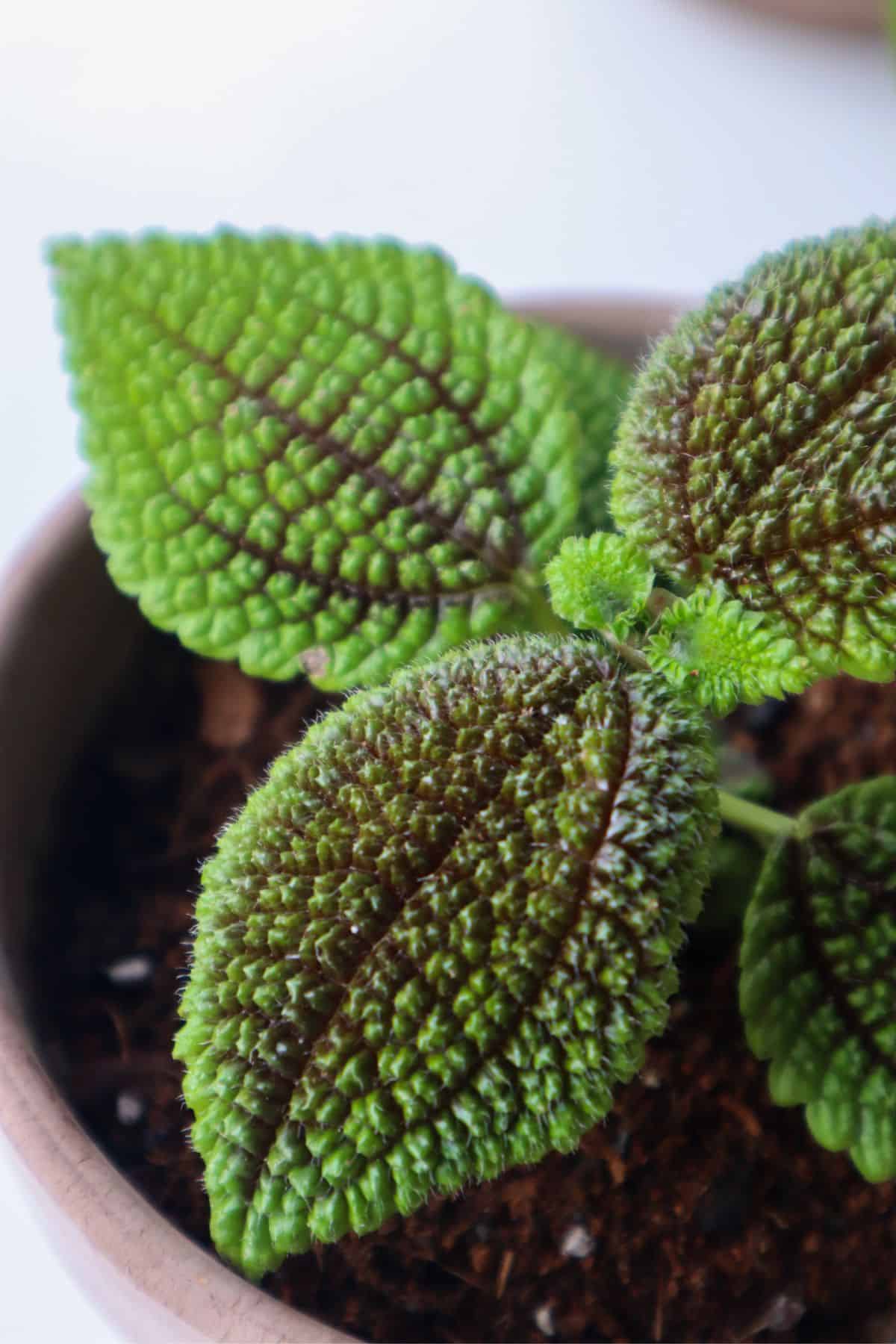
Just to add fuel to the fire, if you googled ‘Friendship Plant,’ you might have even ended up with an image of Pilea peperomioides…
While the ambiguous ‘Friendship Plant’ term is often used to describe the genus, it’s generally accepted as a name for the P. involucrata specifically.
Now I’ve cleared that up, let’s learn how to keep this metallic plant looking tip-top.
Where to Buy Pilea involucrata
See the links below to purchase from reputable terrarium plant shops and marketplaces (may include affiliate links).
Friendship Plant Care & Growth
| Plant Type | Foliage |
| Lighting | Moderate indirect light |
| Temperature | 60-80°F (15.5-26.5°C) |
| Watering | Moderate, even moisture |
| Humidity | 6-12 inches |
| Growth | High humidity (60-90%) |
Lighting
The Friendship Plant loves its fair share of moderate to bright indirect light.
In its native habitat, this plant grows on the forest floor, living its best life in the shade, so don’t give up your prize window sill for this cutie.
Keep it a few feet away from the light source, and limit the amount of direct light it receives. An hour or two should be fine, but nothing more.
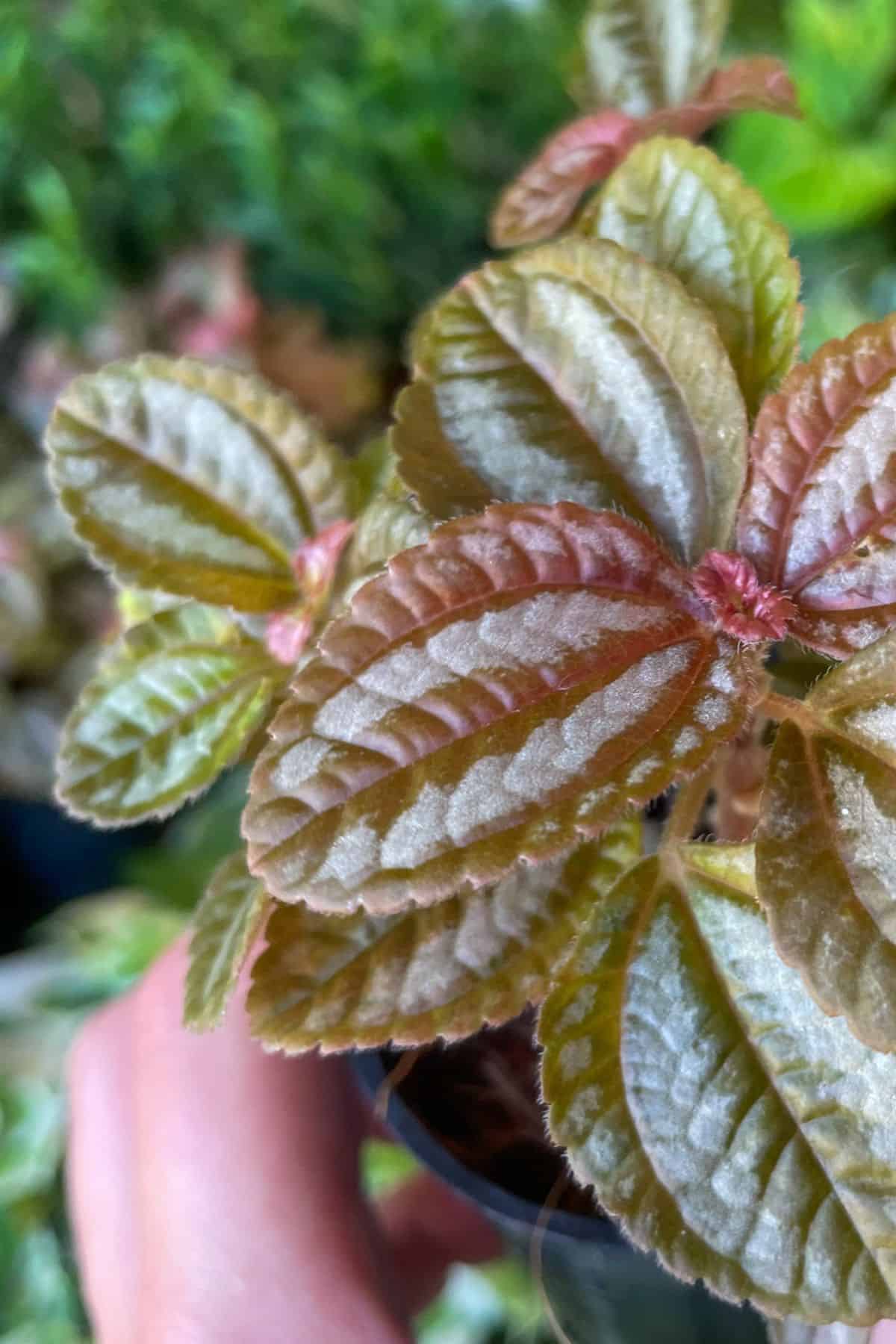
Watering
Like the rest of its family, this plant is a fan of moisture.
It only likes to dry out slightly between waterings, so you’ll likely need to water Pilea involucrata semi-regularly.
A good trick to know when to water it is by testing the soil with your finger; when the top is dry to the touch but beneath the surface is still somewhat moist, it’s time for a top-up.

That said, despite being a thirsty plant (like most tropical species), it can still develop root rot when overwatered. Thankfully that’s easily prevented if you have proper drainage.
- If you’re keeping your Friendship Plant as a houseplant, use a pot with a drainage hole.
- If you’re using it in a terrarium project, a drainage layer of gravel or pebbles is a good idea.

Substrate & Soil
When it comes to substrate, we need only look to Mother Nature.
In the rainforest, the earth resists compaction, drains excellently, and stays moist.
So, to mimic this, I’d choose spongey coco coir as a base and mix in some additives to boost drainage. Use whatever you have to hand – orchid bark, charcoal, or pumice will all work great.
Earthworm castings are a great addition, too, as they act as a natural fertilizer.
👉 Our tropical substrate mix contains all of the above!

Avoid anything dense (like potting soil). It might be inexpensive, but it doesn’t drain well enough.
Pilea involucrata Humidity & Temperature Needs
Pilea involucrata is native to Central and South America, so it’s no surprise that she loves heat and humidity (just like me).
Unless you keep your home like a refrigerator, the temperature is unlikely to be a cause for concern.
Anything around 60-80°F and above is more than fine, but it could struggle in cooler temperatures.
However, high humidity is an absolute must to help this plant thrive.
If anyone ever comes to me with Pilea problems, my first thought is that the humidity is too low.
While it can survive humidity levels around 50%, your involucrata will always be happier to soak up more. I’d aim for 60% at a bare minimum.

Growth
P. involucrata will reward you with two new leaves at a time as it grows, both sprouting from the central stem but on opposite sides.
Each pair will grow at the opposite angle to the last pair, creating a beautiful overlapping effect—top and bottom, then right and left, and repeat.
These plants will never grow to massive heights, but they are crawlers.
They grow by putting out new stems and leaves next to their mother plant, growing horizontally but not much vertically.
Like many other Pilea, you can expect this lovely plant to flower in the warmer months if it’s happy.
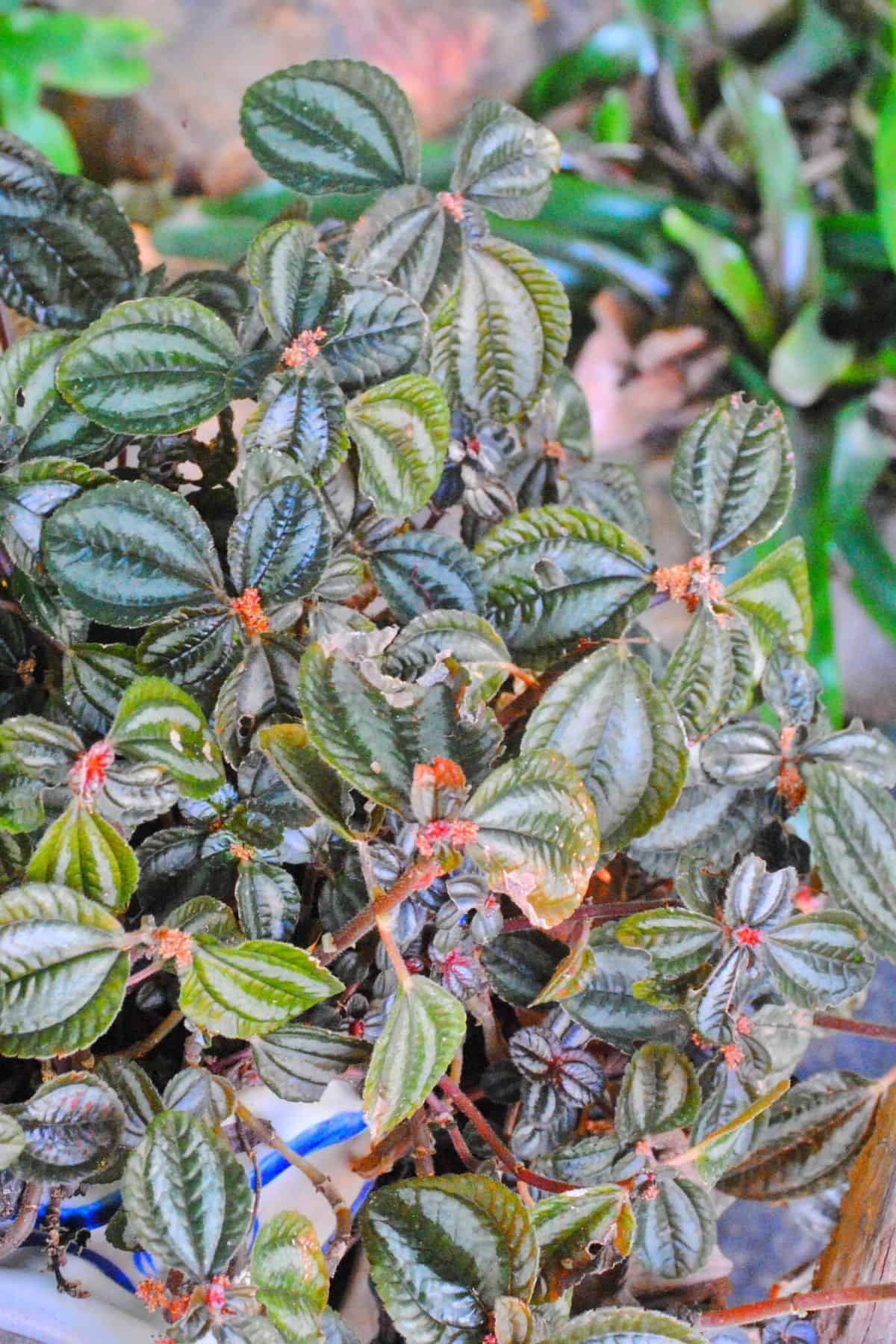
Easy Pilea involucrata Propagation
As you know, the Friendship Plant has a reputation for being a breeze to propagate.
If you’ve ever owned a Chinese Money Plant (Pilea peperomioides), you’ll understand just how. Those bad boys won’t stop multiplying.
As we’ve just covered, the Friendship Plant will grow horizontally by pushing offshoots around the base of the plant. These can then be established into new plants themselves.
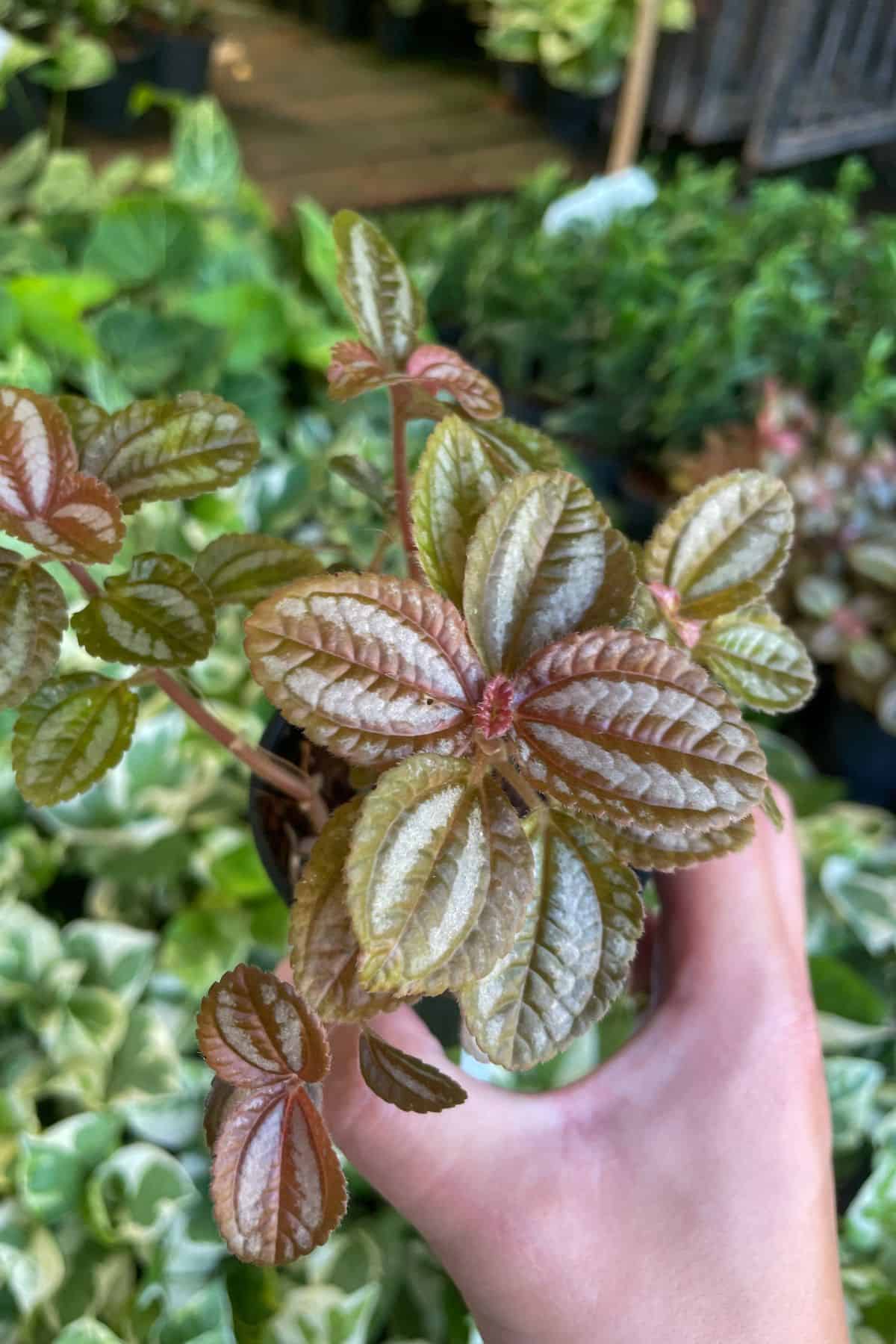
You can tease these new offshoots away or snip them off and let them root up in water. Even stem cuttings from the mother plant will root up great.
Newly rooted plant babies make brilliant gifts! If you have a friend who doesn’t want a Friendship Plant, they are no friend at all. You can’t trust anyone who doesn’t want more plants…
Pilea involucrata is nontoxic to pets (and people), so there’s no excuse, really!
Varieties & Similar Plants
There are several cultivars of this plant on the market today.
However, to be honest, both Pilea involucrata ‘Pan Am’ and Pilea involucrata ‘Norfolk’ seem to offer nothing unique. And in typical Pilea fashion, the internet can’t seem to decide where they come from or what they look like. It’s only the Pilea involucrata ‘Silver’ that has any notable visual differentiation.
Thankfully, this plant isn’t alone in its wacky aesthetics; the Pilea genus is one big, funky family.
With deep forest green pointed leaves and shimmery silver highlights, the Aluminum Plant (Pilea cadierei) is a gorgeous option.
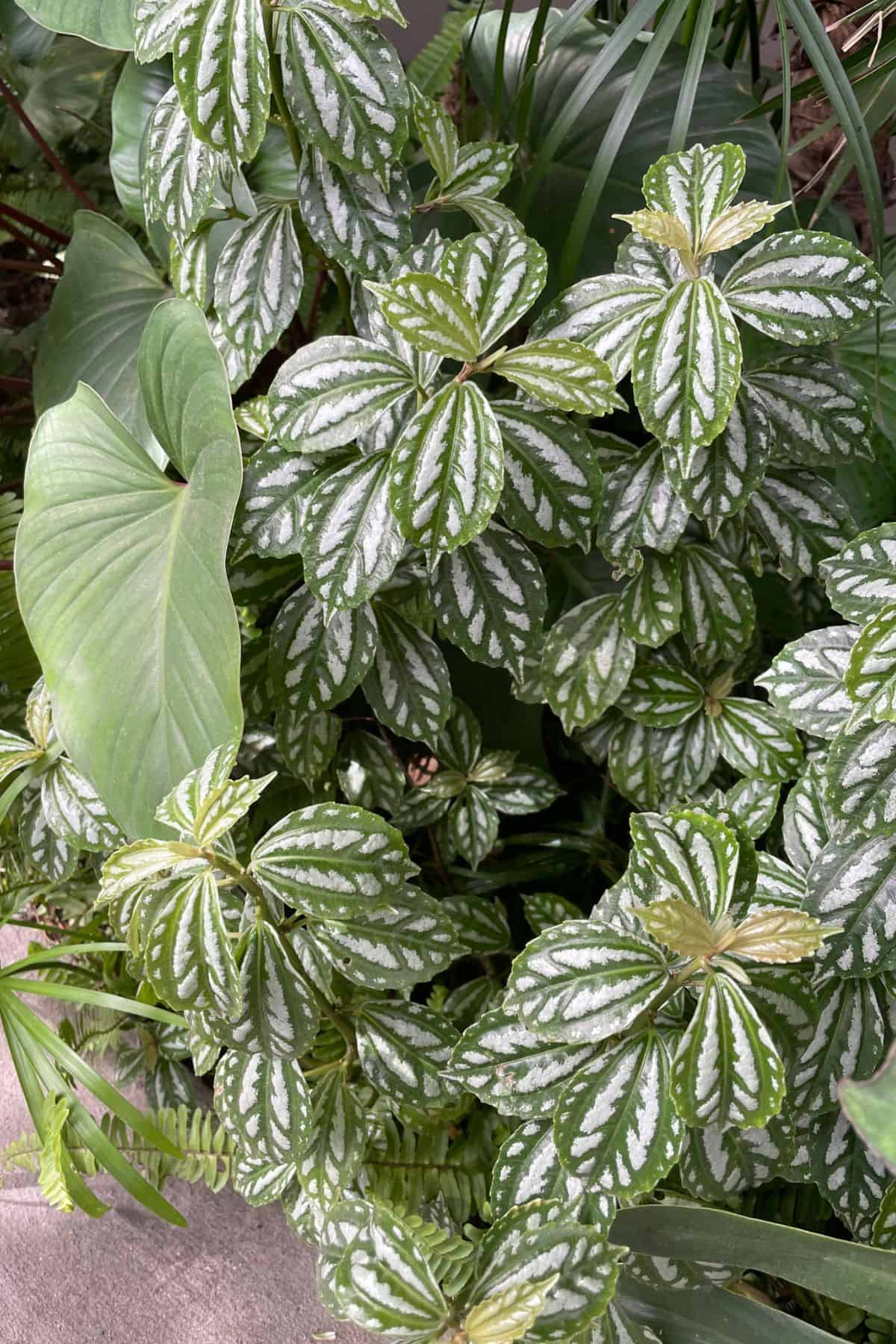
And if you like the involucrata‘s deep burgundy tones, you’re sure to like Pilea repens; it’s similar but without metallic details.
At the other end of the Pilea scale, Pilea glauca and Pilea depressa are tiny little trailing delights.
